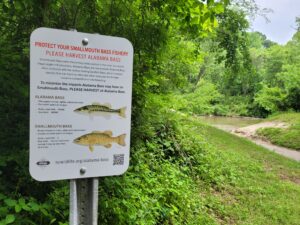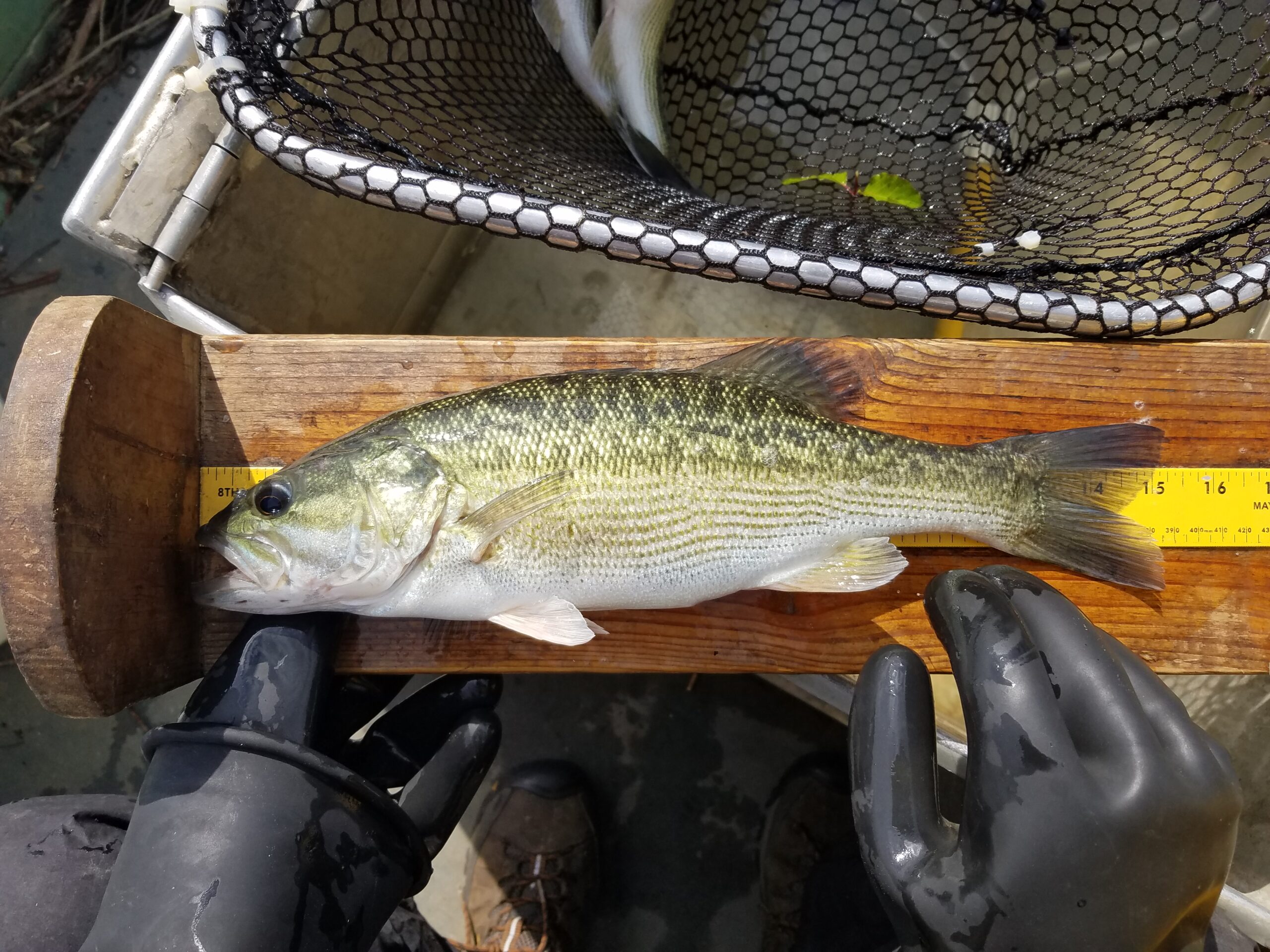April 14. Alabama bass, which are invasive to North Carolina, are now in more rivers and lakes — including Lake Norman — than ever before and are competing with native fish and aquatic organisms.
Biologists at the N.C. Wildlife Resources Commission (NCWRC) are asking the public for help to prevent the spread and reduce the populations of this invasive species in order to protect the future of native largemouth, smallmouth and spotted bass.
 Alabama bass are often mistakenly misidentified as spotted bass or largemouth bass by anglers because their appearance is very similar; however, they are a separate species. They often outcompete and replace native largemouth bass, causing the bass population of a waterbody to be dominated by high numbers of Alabama bass, which on average are smaller than largemouth bass. They readily interbreed with smallmouth and spotted bass. With time this hybridization effectively can eliminate smallmouth and spotted bass from the fish community.
Alabama bass are often mistakenly misidentified as spotted bass or largemouth bass by anglers because their appearance is very similar; however, they are a separate species. They often outcompete and replace native largemouth bass, causing the bass population of a waterbody to be dominated by high numbers of Alabama bass, which on average are smaller than largemouth bass. They readily interbreed with smallmouth and spotted bass. With time this hybridization effectively can eliminate smallmouth and spotted bass from the fish community.
“They’re being stocked and moved to new locations by anglers who need to understand the impact it’s having to our native black bass family of largemouth, smallmouth and spotted bass,” said District Biologist Kin Hodges. “Populations of largemouth bass are being dramatically reduced, while North Carolina could potentially lose smallmouth and spotted bass.”
Alabama bass have been known to exist in North Carolina waters since the 1980’s, but only sparsely, first in far southwestern Lake Chatuge and then Lake Norman. They are believed to have been stocked by anglers.
Routine fisheries surveys conducted by NCWRC biologists have documented the spread of Alabama bass over the last 20 years in North Carolina reservoirs and rivers. Their distribution has rapidly grown and spread to other waterbodies and are now being identified in coastal areas, including the Roanoke and Tar rivers.
“When we heard Alabama bass were being caught in reservoirs upstream of our coastal rivers in 2020, we anticipated we would start seeing them downstream,” Coastal Region Fisheries Research Coordinator Kevin Dockendorf. “In October 2024, our fisheries biologists collected Alabama bass in the Roanoke and Tar rivers with boat electrofishing. This expansion of Alabama bass is of concern given the similarities of North Carolina’s coastal rivers to the habitats found in Alabama bass’s natural range.”
While fishing for Alabama bass is popular with some anglers, NCWRC staff say many anglers are unaware of the threats posed by them and are continuing to move the species into new waters.
“They are being illegally spread across the state by misguided anglers who think that they will make the fishing better,” states Hodges. “The only tools we have to minimize the damage being caused by Alabama bass are to encourage anglers not to spread them to new waters, and to harvest as many as possible in waters where they have already been introduced to minimize their damage.”
Alabama bass can be difficult to distinguish from native bass. Illustrations are posted on NCWRC website to assist with identification. And, NCWRC has installed signs at popular public fishing and boating access areas to help with identification and education about the impact of Alabama bass.
It is illegal to move or stock fish into public waters without a stocking permit obtained from NCWRC. This includes live well releases into waters different from where the fish were caught.
Anyone who observes or has knowledge of illegal Alabama bass stockings is asked to report it by calling 800-662-7137.






Discussion
No comments yet.